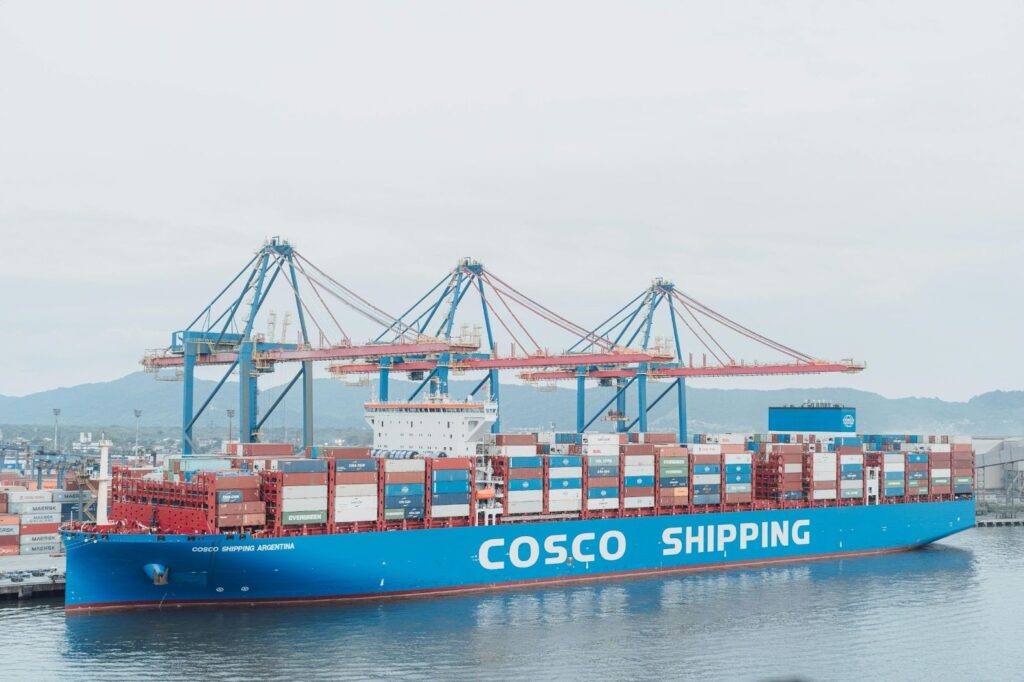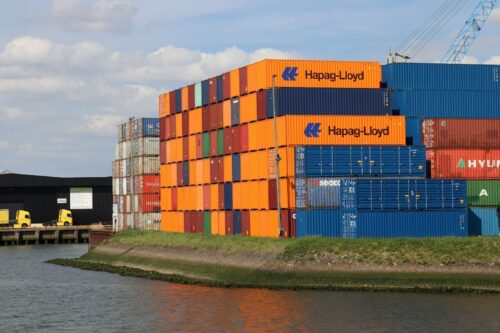Consignee vs. Consignor: Their Key Shipping Differences

In every freight shipment, two key roles drive the process: consignor and consignee. Without them, no shipment would reach its final destination, and no freight carrier could move cargo efficiently. A consignor is the party sending the goods. Ownership of the goods remains with the consignor until payment is made. The consignee does not own the goods until they have paid the consignor in full.
A consignee is the person or company receiving them. Each plays a crucial role in the shipment process. Knowing the difference helps avoid costly delays, missed payments, and legal document issues.
For businesses moving goods or shipping internationally, this clarity reduces errors, improves logistics operations, and strengthens the supply chain. Every party involved must understand these roles to manage freight transactions effectively.
Defining Consignee vs Consignor
Every freight transaction includes two primary roles: the consignor and consignee. These roles define who sends the cargo and who receives it. The consignee can be either the buyer or their agent. In any shipment process, understanding their responsibility helps avoid delays, mistakes, or missed payments.
The consignor prepares and sends the goods. The consignee, termed as the consignee, accepts the goods. Their roles may vary depending on the country, contract, or legal document used in the shipping process.
What Is a Consignor?
A consignor is the person or business that ships the goods from the consignor. They act as the shipper and start the shipping process by preparing the consignment. That includes packing the cargo, choosing a freight carrier, and filling out the documents required to begin international shipping.
The consignee does not gain ownership until they have paid the consignor in full.
A consignor also works with a freight forwarder to plan routes and meet customs duties. In many freight shipment deals, the consignor also arranges special handling instructions, especially when shipping internationally with sensitive goods.
What Is a Consignee?
A consignee is the buyer or end user who receives the goods once the freight reaches the final destination. It is crucial to accurately record the name as the consignee in all pertinent documents to avoid confusion about ownership and responsibility. The consignee definition includes more than just receiving the item. This party takes legal ownership of the goods once they arrive and handles customs clearance paperwork and any invoice or payment details.
In most cases, the consignee pays before or upon delivery, depending on the agreed terms. Ownership is transferred only upon full payment. As the final buyer, the consignee becomes the owner and is responsible for moving the goods to the distribution center or point of sale.
Key Differences Between Consignor and Consignee
Understanding the key points differentiating the two roles of consignor and consignee helps manage the freight transaction without confusion. Each has a specific legal, financial, and operational role. These roles shape how the shipment moves through the supply chain, from warehouse to final destination.
To clarify, let’s define the terms which are commonly used in logistics: the consignor is the party that sends the goods, while the consignee is the party that receives them.
Ownership and Responsibility
Ownership shifts during shipping freight. While the consignor starts as the owner, ownership remains with them until certain terms consignor and consignee agree upon are met. Once the goods are delivered, ownership often transfers to the consignee only when the consignee has paid the consignor in full for the goods.
If the contract includes delivery at the port, then legal ownership transfers at that point. Financial risk and responsibility also follow this handoff. Failing to legally change ownership at the right time can delay payments or create legal risks.
The consignee becomes the ultimate owner only after full payment is made, clarifying that carriers and logistics companies are not considered the ultimate owner.
Role in the Logistics Process
Both parties interact with the freight carrier, freight forwarder, and customs processes differently. Here’s how it usually works:
- Consignor selects the freight carrier, prepares goods, and arranges transport using a delivery service.
- A freight forwarder manages routes, handles compliance, and deals with shipping internationally.
- Consignee coordinates customs duties, accepts goods, and moves them to the distribution center
The consignor initiates the shipment, prepares the necessary paperwork, and ensures the transaction starts smoothly. Upon arrival, the consignee completes the delivery and accepts ownership of the goods. The consignee acts as an agent receiving the goods from the consignor without owning them until full payment is made.
Shipping Process and Documentation
Every shipment moves through a defined process. Each step requires clear paperwork and defined roles from both the consignee and consignor. Mistakes in documents pertaining to consignment lead to delays, fines, or goods getting stuck at customs.
It is crucial that the consignee in the documents is accurately recorded, as this ensures the recipient of the goods is correctly identified.
Accurate paperwork helps keep shipments destined for delivery on track and ensures each transaction correctly reflects legal and financial agreements.
Shipping Documents Needed
Certain documents support the shipping and receiving process. Each one plays a specific role and confirms details between all parties involved. The carrier who enters the consignee’s information in consignment documents is responsible for ensuring the accuracy of this documentation. Here are the major documents required:
- Bill of lading: Confirms the shipment details, names the shipper, and acts as proof of transport between the carrier and receiver.
- Customs clearance paperwork: Lists product types, values, and country of origin. Helps both the exporter and buyer clear customs during international shipping.
- Payment terms: Outlines how and when the consignee pays. Defines financial terms, due dates, and the method of sale completion.
It is important to note that the consignee receives the goods in a consignment without owning them until full payment is made to the consignor.
Proper documentation ensures a smooth transfer of ownership, keeps the transaction transparent, and supports faster clearance through H)global logistics systemsB).
Legal and Financial Considerations
Missing or incorrect paperwork affects more than just delivery times. Financial losses, contract disputes, and ownership problems often come from poorly handled legal terms. Both the buyer’s bank and the seller’s bank rely on precise information to release funds or letters of credit. In a consignment, the individual receiving the goods is always a consignee.
The consignor is the sender of the goods. Accurate documentation also ensures that transferring goods happens in compliance with local and global trade laws. It confirms the rightful owner and protects both sides from disputes.
Risks, Liabilities, and Compliance
- Delays from missing legal documents: Missing or incomplete paperwork causes shipping hold-ups, delaying customs release, and affecting delivery timelines and customer satisfaction.
- Fines due to incorrect customs declarations: Wrong information in customs forms triggers penalties, delays cargo clearance, and may result in additional inspections or denied entry at borders.
- Disputes over unclear ownership terms: Unclear transfer of ownership creates legal battles, especially during damage or loss claims, impacting relationships between consignor and consignee. In most cases, a consignee is merely the receiver of the goods and not the owner until full payment is made to the consignor.
- Financial losses when payment terms are vague: Lack of clear payment agreements causes delays in fund transfers, missed payments, and confusion over who handles final freight charges.
- Legal issues if the responsible party isn’t defined: Failure to assign responsibility results in accountability gaps, leading to lawsuits, regulatory violations, or shipment abandonment during critical stages.
Understanding these risks helps each party prepare and protect their business interests by setting clear terms, assigning responsibilities, and ensuring compliance with all shipping regulations and agreements. The consignee receives goods with the intention of selling them but does not hold ownership until payment is made to the consignor.
How Consignors and Consignees Work Together in Freight Shipping
Smooth operations in freight shipping rely on coordination between the consignor, who sends the goods, and the consignee, who receives the goods and the consignee may include the buyer or their representative. In global trade, small errors between these parties lead to delays, extra costs, or legal problems. Discover fast, efficient, and affordable courier services for all your delivery needs.
In the trading and transport sector, the roles of consignor and consignee are crucial for ensuring that logistics run smoothly. Strong coordination keeps shipping fast, clean, and efficient.
The Role of Freight Carriers and Forwarders
A consignor partners with a freight carrier or freight forwarder to ship goods by selecting transport methods, preparing required documents, scheduling pickup times, and coordinating delivery windows for smooth and timely freight movement.
Shippers, along with carriers and third-party logistics companies, play a crucial role in the shipping process but are not considered the ultimate owners or consignees of the products being transported.
A freight forwarder helps organize routes, schedule pickups, and manage cross-border paperwork. On the other end, the consignee handles customs clearance and moves products to a distribution center or final storage point. Together, they close the loop on the freight journey.
Ensuring a Smooth Shipment Process
Clear communication and shared documentation reduce shipping errors. The distinction between buyer and agent is of no concern to the carrier, who simply records the consignee’s name in the relevant documentation. Each party should:
- Confirm the consignment details early: Verify shipment quantity, description, and terms before dispatch to prevent confusion, disputes, or delays during the transportation process.
- Exchange accurate paperwork: Share complete and correct documents, including invoices and bills of lading, to avoid customs issues and ensure smooth cargo movement.
- Track the shipment during transportation: Monitor freight in real-time using tracking tools to identify delays early and coordinate solutions with logistics partners or carriers.
- Clarify responsibility for any delays or damage: Agree on liability terms in advance to avoid conflicts if cargo is damaged or delayed during transit or customs handling.
- Share real-time updates if problems occur: Communicate issues immediately to all parties involved, allowing quick decisions that minimize disruption to the shipping schedule and final delivery.
It is important to note that the consignee receives goods with the intention of selling them, which emphasizes their role in the consignment process.
Strong coordination between the consignee and consignor allows goods to move without conflict. When everyone understands their role, freight moves faster, costs stay low, and customer satisfaction increases.
Conclusion
A clear understanding of the difference between consignor and consignee supports smoother logistics operations and fewer delays in freight transactions. A consignor acts as the shipper and sends the goods, while a consignee takes ownership at the end of the transportation journey. The person who receives the goods in a consignment is always a consignee.
Each role carries legal and financial responsibility. Failing to define these roles properly creates confusion, especially during global consignment deals. Every company involved in transport must know the difference to manage paperwork, payment, and delivery.
Whether you’re an agent, a seller, or a business moving freight, understanding who is responsible helps protect your goods, your money, and your customer relationships.


